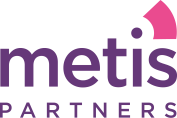The Company is a service provider to global Oil & Gas operators. It was originally focused on R&D but had transitioned to a commercial/sales-oriented business model in order to capitalize on its fully-developed technologies.
Metis Partners was engaged by the Company to identify all the key IP assets vesting in the business and assess their importance in relation to the Company’s competitive advantage. The Company sought to better understand the extent of IP which it had created and relied upon, as well as identifying any gaps in the Company’s IP strategy.
Ultimately, the findings from our IP Audit were to be used to inform a revamped IP management approach and strategy within the Company, including steps which the Company could take to strengthen weaknesses in its patent portfolio, and in so doing, improve the confidence of its board and investors.
Our Metisology® approach included an on-site day with the Company’s executive, management and technical team to learn about the business, its technologies and products, R&D activities and key commercial operations. We identified critical IP assets including patents, know-how and trade secrets, successfully mapped these to historic and forecast revenues and ring-fenced the IP assets we deemed to be most critical to the Company’s competitive advantage. We also identified areas of weakness, particularly informal but critical IP assets, which we found to be driving growth and delivering the Company’s product differentiation that were being overlooked or neglected.
Our assessment extended to a review of the Company’s patent portfolio, which revealed that the majority of the Company’s patent filings remained pending in excess of 4 years, with filings in key territories facing a string of rejections by patent examiners. These patent applications were in the process of having claims limited and deleted to an extent which could arguably diminish any value the Company might obtain in any negative right afforded by the resulting patent. A costly and ineffective strategy. We looked beyond patents, however and discovered informal IP, trade secrets and know-how, which were found to be critical to the competitive advantage of the business, irrespective of patent filings.
Our IP Audit discovered a major IP risk and one that could be devastating to the future of the business. There was significant know-how in the minds of key individuals within the Company that was both critical to the business and which likely constituted a trade secret. In fact, particular elements of know-how were so critical to the provision of one of the Company’s top-revenue generating services that, without the individual holding this know-how present, the Company would struggle to provide the service. This know-how, however, was not recorded, was not shared amongst staff and was at serious risk of loss or leakage. The board and management’s acknowledgement of its reliance on IP’s importance and our early involvement in assessing the Company’s IP assets and existing gaps in IP management, enabled the Company to mitigate a major IP risk. This IP audit was the trigger for their proactive management of IP.
In the months following the assignment, a key staff member holding the critical know-how resigned from the Company under a month’s notice period, however the Company was able to eliminate the potential need to conduct damage control in response to the impairment the business might have otherwise suffered once this key employee would have left. Proactive IP and management provided the necessary protection to the Company’s competitive advantage.
IP Assets Appraised – Patent Portfolio, Trade Secrets, Key Organizational Knowledge, Know How, R&D

